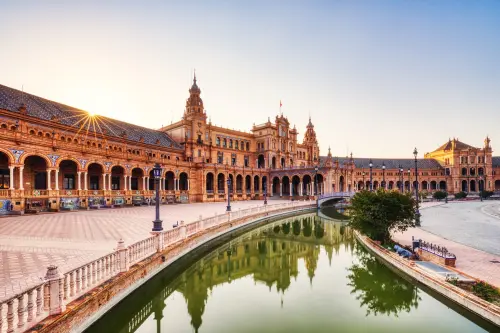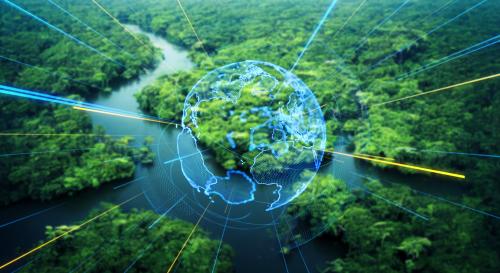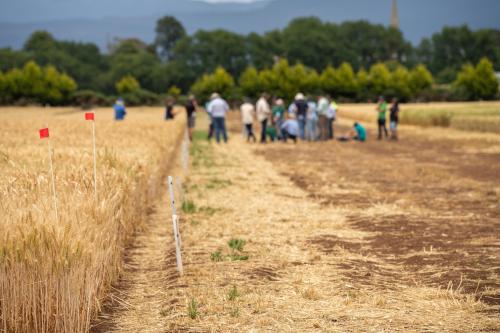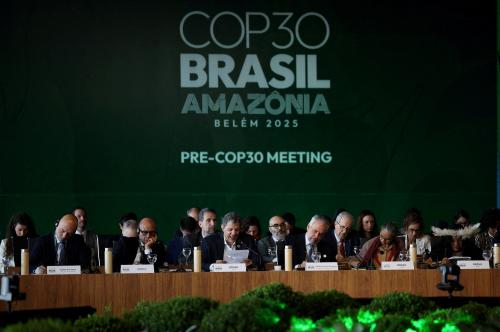This paper makes the case for a big push on investments for sustainable development in emerging markets and developing economies (EMDEs).1 It identifies priority sectors for such investments that have had high-level endorsement at multilateral gatherings over the last few years. It discusses the implications of a big investment push for absorptive capacity at both macroeconomic and microeconomic levels, and for access to finance. It provides an empirical framework based on currently available data that can be improved over time as new information becomes available and priorities get updated. It does not provide an exhaustive list of all the investment priorities that individual countries or development agencies have identified. For example, the range of estimates for adaptation investments is very large and requires additional work to unpack. As another example, gender-responsiveness and disability-inclusion are typically not integrated into the estimates. Such uncertainties can lead to a broad range of answers to the question of how big an investment push is needed. Our paper provides some granularity on this matter as a contribution to the work of the Independent High Level Expert group (IHLEG) on climate finance and the forthcoming report of this group on the roadmap from Baku to Belem.
The urgent need for a big investment push in developing countries
Emerging markets and developing economies (EMDEs) are at the center of a global sustainable development challenge. These countries face slow growth, rising debt, demographic pressures, and climate risks. The traditional aid-driven model—constrained and donor-led—is inadequate given these severe challenges. This paper calls for an investment-led approach in which EMDEs define their sustainable development priorities and the global community builds customized financing packages to support the resulting investments. Achieving inclusive prosperity and planetary stability will only be possible if a multi-decade push on investment for sustainable development (ISD) is implemented in most EMDEs.
The new growth story of the 21st century
Technological advances now enable a growth model that is sustainable, inclusive, and resilient. Clean energy, digitalization, and resource-efficient systems allow EMDEs to bypass outdated, high-emission pathways. Many markets have already reached tipping points thanks to cheaper and more accessible green technologies, debunking the notion that climate action hinders growth—Well-designed strategies can deliver both development and decarbonization. What is needed is public and private investment to drive the required economic transitions at scale and with urgency. A suite of economic models, calibrated to country-specific conditions, suggests that a large ramp-up in public and private investments is feasible, while sustaining stable macroeconomic conditions and retaining creditworthiness in EMDEs and while respecting limitations in the provision of concessional finance by rich countries.
Integrating climate, nature, and development priorities is essential, not optional
The idea that climate action and nature protection hinder development is both outdated and counterproductive. In reality, climate and nature investments can simultaneously drive growth, reduce poverty, and build resilience. These investments tackle market inefficiencies, spur innovation, and improve health, jobs, and productivity. Delaying action on climate change and biodiversity loss to focus on development is a false choice: The impacts of climate change and biodiversity collapse are already eroding livelihoods, food security, and health, especially for the most vulnerable. Aligning climate, nature, and inclusive development is not just possible—it is essential for lasting prosperity.
Priority investments for EMDEs
The paper highlights four critical areas for incremental investment:
- Human capital: Africa’s youth boom demands large-scale additional investment in education and health. Returns are high—10% per year of schooling and up to $4 for every $1 in health. Annual spending in EMDEs on human capital should rise by 3.8 percentage points of GDP by 2035, with greater increases in low-income countries.
- Physical infrastructure: EMDEs should expand clean energy and urban systems, requiring a 5.8% of GDP boost in investment. Grid upgrades, renewable energy, and public transport are key to meeting growing urban demand.
- Adaptation and resilience: Floods, droughts, and extreme heat are escalating. Adaptation spending should rise by 1.5% of GDP to prevent over $200 billion in annual damages and safeguard livelihoods.
- Natural capital: EMDEs house critical biodiversity. Investments in reforestation, sustainable agriculture, and ecosystem restoration offer high returns (up to $30 per $1 spent). Incremental priorities total 0.4% of GDP, especially in Latin America and Asia.2
Altogether, EMDEs will need $6 trillion more annually by 2035—about 11.4% of GDP. This increase is roughly evenly split between public and private spending priorities, and over 70% of the financing should be available from domestic sources.
The geographic distribution of a big investment push in EMDEs
Investment needs vary widely by region. Each region needs to invest more in each area, but some regions show comparatively large gaps in selected sectors.
- Africa: Needs large increases in human capital, the energy transition and adaptation.
- Asia: Should reorient investment toward human capital and infrastructure.
- Latin America: Faces major gaps in nature and sustainable agriculture financing.
Tailored strategies aligned with regional contexts are essential to closing these gaps.
Policies to implement a big push
Investment accelerations require strong institutions, policy reforms, and public-private collaboration. Country platforms—nationally led and inclusive of national development banks and the private sector—can align investments with strategic priorities. Public and private investments complement one another; governments must build enabling systems, while the private sector drives innovation and delivery.
Financing should combine domestic resource mobilization, concessional finance, blended instruments, and innovative mechanisms like debt swaps and carbon markets. Evidence shows that past investment surges have fueled growth and improved macroeconomic indicators, suggesting considerable scope for private finance.
Implications for action
Without bold action, EMDEs risk deepening inequality, climate vulnerability, and stagnation. The paper outlines three key imperatives:
- Build global consensus: Support investment for sustainable development as the pathway to prosperity and climate resilience, with implications for developing investment programs using country platforms strengthened by policy and institutional reform. Such pathways also have implications for how providers of official external finance should use fiscal rules and debt sustainability assessments in validating such investments.
- Rethink fiscal space: Support those EMDEs with credible reform agendas, even if debt levels are high. Shift from rigid debt thresholds to a focus on investment quality and implementation.
- Deepen and broaden channels through which global finance can flow: More types of finance for sustainable development are needed and the volumes of each type should be higher. Upcoming forums (COP30, G20, FfD4) can reform the development finance architecture to make it capable of mobilizing the $1.3 trillion climate finance gap and additional gaps for other development priorities.
With the right mix of ambition, policy, and financing, EMDEs can lead a global transformation toward sustainable growth.
-
Footnotes
- In this paper, we use the term EMDEs to cover all developing countries, small island states, and vulnerable countries. Although China is also part of the EMDE group, it is excluded from the empirical analysis as it has the resources and capacity to make investments for sustainable development on its own account, without reliance on multilateral cooperation.
- It is important to note that these estimates principally cover nature and biodiversity and do not include the full extent of likely investments needed in sustainable agriculture and degraded lands.
The Brookings Institution is committed to quality, independence, and impact.
We are supported by a diverse array of funders. In line with our values and policies, each Brookings publication represents the sole views of its author(s).









